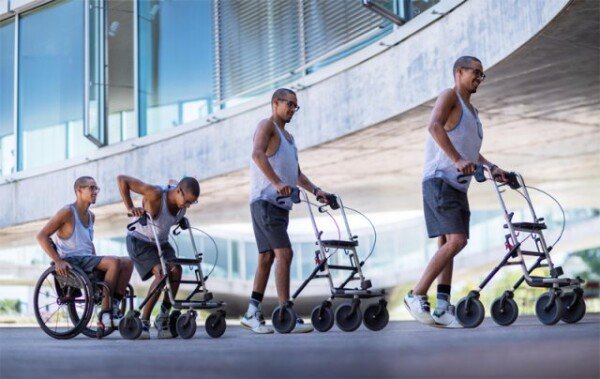Step-by-step analysis of gene expression change
Identify active neurons during recovery
A study was conducted to investigate how nerve cells (neurons) change in the process of recovering the ability to walk in patients with reduced mobility due to spinal cord injury. It is expected to contribute to the treatment of paraplegic patients by revealing the recovery process of patients with spinal cord injury at the cellular level.
A research team from the Federal Institute of Technology Lausanne (EPFL) in Switzerland conducted a long-term study on gait improvement in patients with spinal cord injury with electrical stimulation, identified neurons that respond to electrical stimulation, and impaired the recovery and published an international magazine ‘Nature’ It was announced on 9 (local time).
Professor Kurtin’s team has conducted research on improving walking ability by applying epidural electrical stimulation (EES) to patients who have been paralyzed in the lower body due to spinal cord injury for over 10 years. In 2016, they published a study showing that paralyzed monkeys can walk normally by applying electrical stimulation to the brain and spinal cord.
Since then, research has been conducted to apply the same treatment to humans, and the results in 2018 have been disclosed. Three paraplegic patients who received EES treatment from the research group announced that they were able to move their legs in one week and, after 5 months of rehabilitation training, were able to move their legs without electrical stimulation. In February of this year, the results of a study in the international academic journal Nature Medicine were published in the international scientific journal Nature Medicine, which implanted electrodes in the spinal cord of three completely paralyzed patients in the lower body and recovered them sufficiently. go back to walking and cycling.
EES was originally developed as a treatment for pain relief, but a number of studies have shown some efficacy in stimulating living neurons beneath the damaged spinal cord.
Since then the research team has continued to improve EES treatment for paraplegics. By changing the position of the electrical stimulation from the back to the side of the spine, individual nerves can also be stimulated.As a result, patients returned to their daily life to the point where they could not only ride a bike, but also swim and drink. standing.
However, it has been difficult to ascertain how electrical stimulation improves the walking ability of paraplegic patients. Although EES therapy has proven effective, the detailed mechanisms by which electrical stimulation rearranges neural circuits and restores neurons are not known.
The research team first analyzed how electrical stimulation changes nerve cells through an article published in Nature on the 9th and released the research findings. After applying electrical stimulation to a rat model with spinal cord injury, the research team created a neuronal map analyzing changes in gene expression at each stage of rehabilitation. It is now possible to observe changes in individual neurons during the recovery process.
In this process, we were able to identify specific types of neurons (SCs) that are reactive and activated by EES. These neurons have actually been shown to play an important role in restoring the ability to walk. When this neuron was suppressed, the ability to walk was not restored even when electrical stimulation was applied, while when this neuron was activated, the ability to walk was restored even without electrical stimulation.
This study should be used as important information for the future treatment of paraplegic patients and allow them to move in a more complex way. “This will serve as a basis for preparing neural maps for understanding more complex behaviors,” Kurtin said in his article.
Lee Young-ae, Donga Science reporter [email protected]


